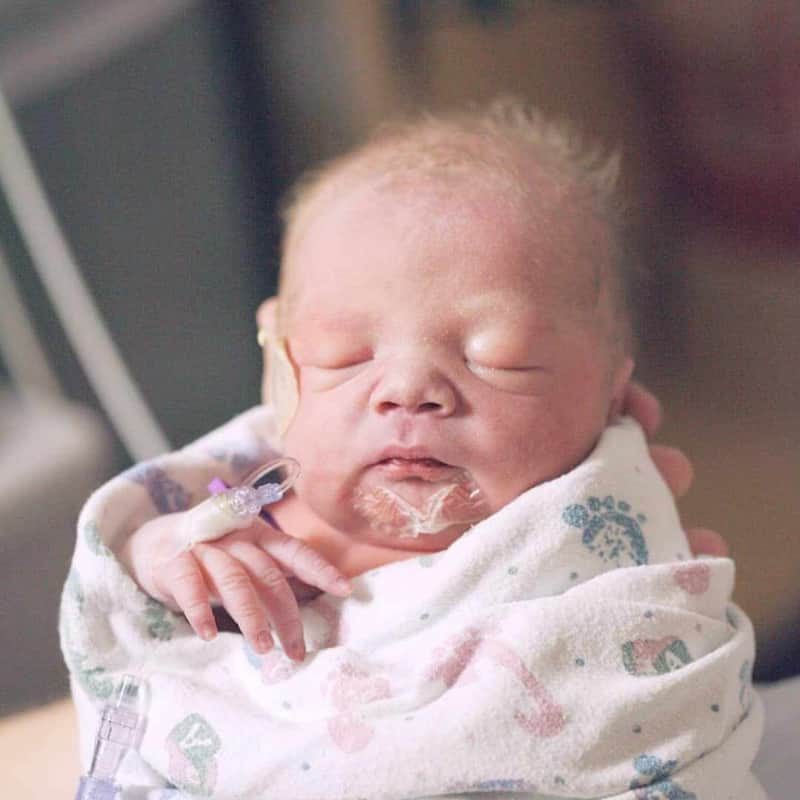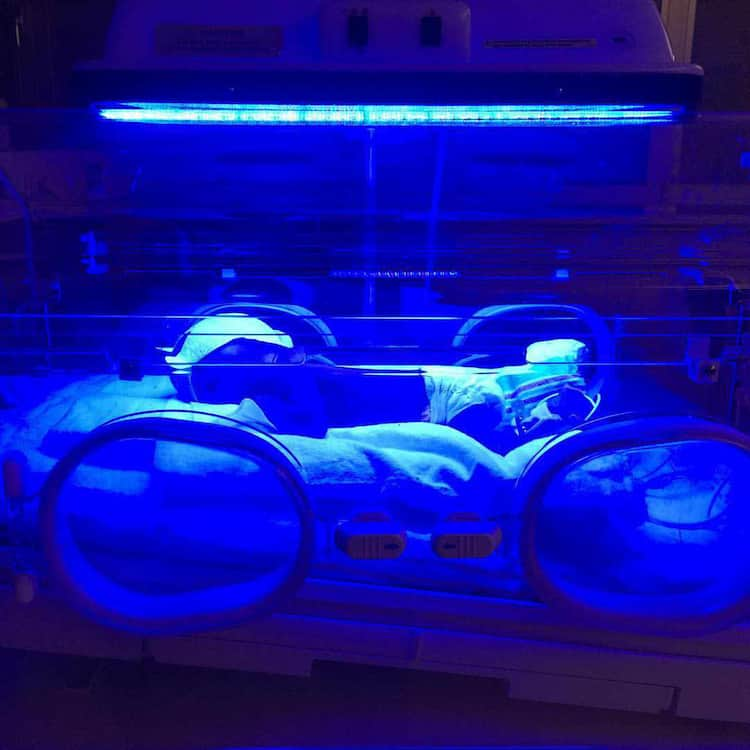Content :
◉ What is Jaundice in newborns?
Jaundice is a manifestation of high bilirubin levels, a yellow pigment that is a byproduct of the breakdown of red blood cells. The liver plays a crucial role in processing bilirubin and excreting it into the bile, which is then eliminated from the body.
In newborns, physiological jaundice is common and typically occurs due to factors such as the immature liver function and increased breakdown of red blood cells. This type of jaundice is usually temporary and not a cause for concern. However, in some cases, it may be important to monitor bilirubin levels, especially if jaundice appears within the first 24 hours of life or is severe and prolonged.
In addition to physiological jaundice, there are pathological causes of jaundice in newborns, such as hemolytic disease, infections, or liver disorders. These conditions may require further investigation and medical intervention

◉ Types of jaundice in newborns
Physiological jaundice usually happens in newborns as the liver of the infant is not fully developed yet for the efficient break down and excretion of bilirubin. However, older babies can have jaundice due to other pathological causes that can manifest slightly differently and help in the diagnosis and further treatment, and can effectively be put into these three types:
1- Hemolytic jaundice
- Results from the abnormal destruction of red blood cells.
- Increased breakdown of red blood cells releases more bilirubin into the bloodstream, overwhelming the liver's capacity to process and eliminate it.
- This type of jaundice may indicate underlying conditions such as hemolytic anemia or other blood disorders.
2- Hepatocellular jaundice
- Arises from liver damage or disease.
- Conditions such as liver failure or cirrhosis can impair the liver's ability to process bilirubin effectively, leading to its accumulation in the blood.
3- Obstructive jaundice
- Develops when there is a blockage in the bile system, such as the bile duct.
- The obstruction prevents the normal flow of bile, causing bilirubin to accumulate in the bloodstream.
- Possible causes include gallstones, tumors, or other obstructions in the bile ducts.
Another classification according to the type of bilirubin can be used for diagnosing and managing jaundice:
1- Unconjugated Bilirubin (Indirect bilirubin)
- Unconjugated bilirubin is the initial form of bilirubin produced from the breakdown of hemoglobin in red blood cells. It is insoluble in water and needs to be processed by the liver before it can be excreted.
- Elevated levels of unconjugated bilirubin in the blood can indicate issues with the normal breakdown of red blood cells or impaired uptake by the liver.
2- Conjugated Bilirubin (Direct bilirubin)
- Conjugated bilirubin is the result of the liver processing unconjugated bilirubin. The liver adds a sugar molecule to unconjugated bilirubin, making it water-soluble and capable of being excreted in bile.
- Elevated levels of conjugated bilirubin in the blood may suggest liver dysfunction or issues with the excretion of bilirubin into bile.
◉ Causes
Jaundice in children is usually is not a dangerous sign and is temporary, but when it is persistent, this calls for further testing and evaluation in order to find the cause for the correct treatment. Here are some of these more common causes:
- Blood type mismatch: when baby and mother do not have the same blood type, they break down and release bilirubin.
- Infection: usually viruses like CMV, Hepatitis B and C, and EBV can causes elevated bilirubin levels as they affect the liver
- Blood cell disease: all types of hemolytic anemias cause jaundice like sickle cell anemia and spherocytosis
- Cholestasis: cholelithiasis (gallstones) can precipitate in the lumen of the biliary duct and block it
- Genetic diseases: such as Wilson's disease, which is a genetic disease that causes copper build up in the liver.
- Cancer: although rare in children, cancers of the liver and pancreas can cause jaundice
◉ Symptoms and signs of jaundice in newborns
Symptoms of jaundice in newborns mostly related to the medical condition that cause jaundice so health care providers should make good examination.
1 Jaundice in newborns is characterized by a yellowish discoloration of the skin and mucous membranes, particularly noticeable in the sclera of the eyes in daylight. This yellowing typically starts on the face and progresses downward, affecting the chest, abdominal area, and soles of the feet.
2- In cases of severe jaundice, the newborn may exhibit signs of pronounced fatigue. Difficulties with breastfeeding or bottle-sucking may also arise, impacting the infant's feeding habits.
3- A reduction in the frequency of wet or dirty diapers may be observed in newborns with persistent jaundice, underscoring the need for thorough medical evaluation to determine the underlying cause and administer appropriate treatment.
4- Untreated jaundice can lead to serious neurological complications such as kernicterus. This includes athetoid cerebral palsy, characterized by uncontrolled movements in the arms, legs, and face, as well as auditory and visual complications, dental issues, and intellectual disabilities.
5- When examining newborns with jaundice symptoms, healthcare providers should be vigilant for signs of bilirubin encephalopathy, including poor feeding, lethargy, altered sleep, abnormal muscle tone, or seizures.
6- Additionally, other symptoms such as pallor, petechiae, cephalohematoma, subgaleal bleed, bruising, and hepatosplenomegaly should be evaluated to obtain a comprehensive clinical picture. This thorough approach is essential for ensuring an accurate diagnosis and appropriate treatment.
◉ Diagnosis of jaundice in newborns
Evaluation of jaundice in neonate need to obtain detailed history including birth history, family history, when jaundice appear and maternal serology's that done during pregnancy.
Diagnosis of Unconjugated Hyperbilirubinemia
Transcutaneous Bilirubin (TcB)
- If TcB levels exceed the 95th percentile on the transcutaneous nomogram or 75% of the TSB (Total Serum Bilirubin) nomogram for phototherapy, it indicates the need for intervention.
- Limitations include reduced utility in infants with dark skin and after phototherapy, as well as an inability to provide a direct fraction of bilirubin, making it less useful in diagnosing neonatal cholestasis.
Tests for Hemolytic Disorders
- Maternal/neonatal blood type.
- Coombs test.
- Complete blood count.
- Reticulocyte count.
- Blood smear.
Serum Albumin Level
- A surrogate marker for free bilirubin, especially important if total serum bilirubin approaches exchange transfusion levels.
- Free albumin is responsible for bilirubin-induced toxicity.
Bilirubin Albumin Ratio (B/A)
- Predicts the risk of kernicterus.
Diagnosis of Conjugated Hyperbilirubinemia
- Serum Aminotransferases (ALT and AST): Checks for hepatocellular injury.
- Alkaline Phosphatase (ALP) and Gamma-glutamyl Transpeptidase (GGT): Assess for evidence of bile canal obstruction.
- Prothrombin Time, INR, and Serum Albumin Level: Evaluate hepatic synthetic function.
- Radiology: Radiological workup to identify neonatal cholestasis.
- Hepatic Ultrasound: Helps identify gallstones, inspissated bile, and choledochal cysts.
- Hepatobiliary Scintigraphy: Commonly used for evaluating neonatal cholestasis.
- Liver Biopsy: Gold standard for the diagnosis of neonatal cholestasis.
◉ Treatment
Many infants with jaundice do not require treatment. If your baby has mild jaundice, the doctor will advise the mother to continue breastfeeding more frequently than usual, which improves bowel movements. Usually, jaundice resolves within 2 weeks in mild cases.
If the neonate has more severe symptoms, treatment may include:
◉ Phototherapy treatment (also called light therapy)
This is the first-line treatment for unconjugated hyperbilirubinemia. It decreases levels of total serum bilirubin, reducing the risk of bilirubin toxicity. The therapy involves placing the baby under a special blue-green light (460-490 nm) to convert bilirubin into lumirubin, which can be excreted in urine.

◉ Exchange transfusion
This is the second-line treatment for severe unconjugated hyperbilirubinemia. It's indicated when the neonate fails to respond to phototherapy. Exchange transfusion helps eliminate excess bilirubin from the blood.
◉ Intravenous immunoglobulin (IVIG)
This is used in cases where immune-mediated hemolysis is the cause of unconjugated hyperbilirubinemia.
Treatment of conjugated hyperbilirubinemia involves addressing the underlying cause. For example, patients with biliary atresia are treated with the Kasai operation.
◉ Conclusion
In conclusion there are plenty of causes that result in jaundice in newborn moreover, depending on the cause the management plan is decided accordingly.